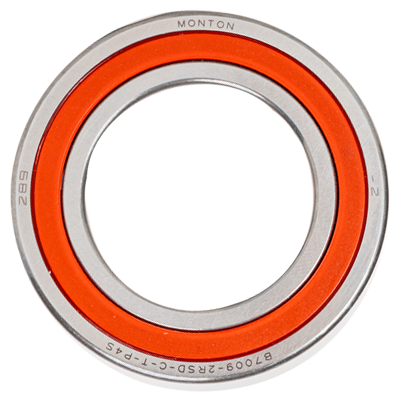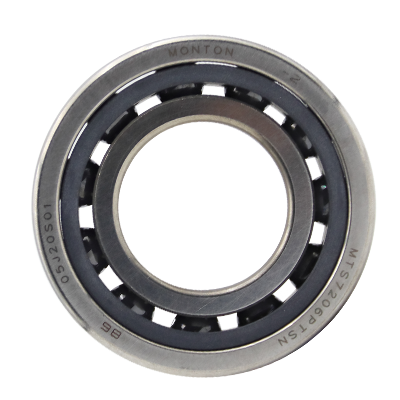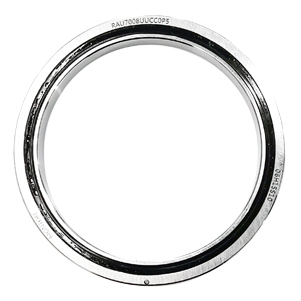Twin screw compressor bearing function and selection criteria
The function of bearings in twin screw compressors is to provide accurate radial and axial positioning of the rotors and to support the load on the rotors. These functions are to
be performed reliably, with low friction and low noise generation.
With accurate positioning of the rotors, it is possible to design the compressor with small clearances for
high efficiency. Radial positioning accuracy of the rotors is accomplished by using bearings having
small operating clearances and high running accuracy (low run-out). Axial positioning accuracy is accomplished by small axial bearing clearance or preload. Axial positioning accuracy is also affected by the fit between the thrust bearing inner ring and the shaft and bearing deflection and displacement due to centrifugal forces.
Interference fits will change the axial position of the outer ring after mounting. Axial positioning accuracy is also affected by the accuracy of the adjustment of the rotor end clearance during assembly. Thrust bearings mounted with interference fits make the adjustment more difficult.
In large industrial refrigeration compressors and in some air conditioning compressors, the available
rotor center distance can be a primary criteria in the bearing selection.
The rotor profile affects the center distance; therefore, the rotor design and bearing selection process is sometimes iterative. The center distance limits the size of the bearing outer diameters. Therefore, if one
rotor carries a higher load, it is possible to select a larger bearing for this rotor and a smaller bearing for the other.
This design option is however in conflict with the desire to minimize the number of different bearings in
the compressor and also requires additional tooling for the production of the compressor housing.
The rotors can be supported on rolling bearings or on a combination of hydrodynamic and rolling bearings.
The main advantage with rolling bearings is their small operating clearances. Rolling bearings also have lower friction than hydrodynamic bearings, require less oil for lubrication and cooling, and are less sensitive to momentary loss of lubricant and refrigerant flooding than hydrodynamic bearings.


 English
English Russian
Russian Chinese
Chinese









